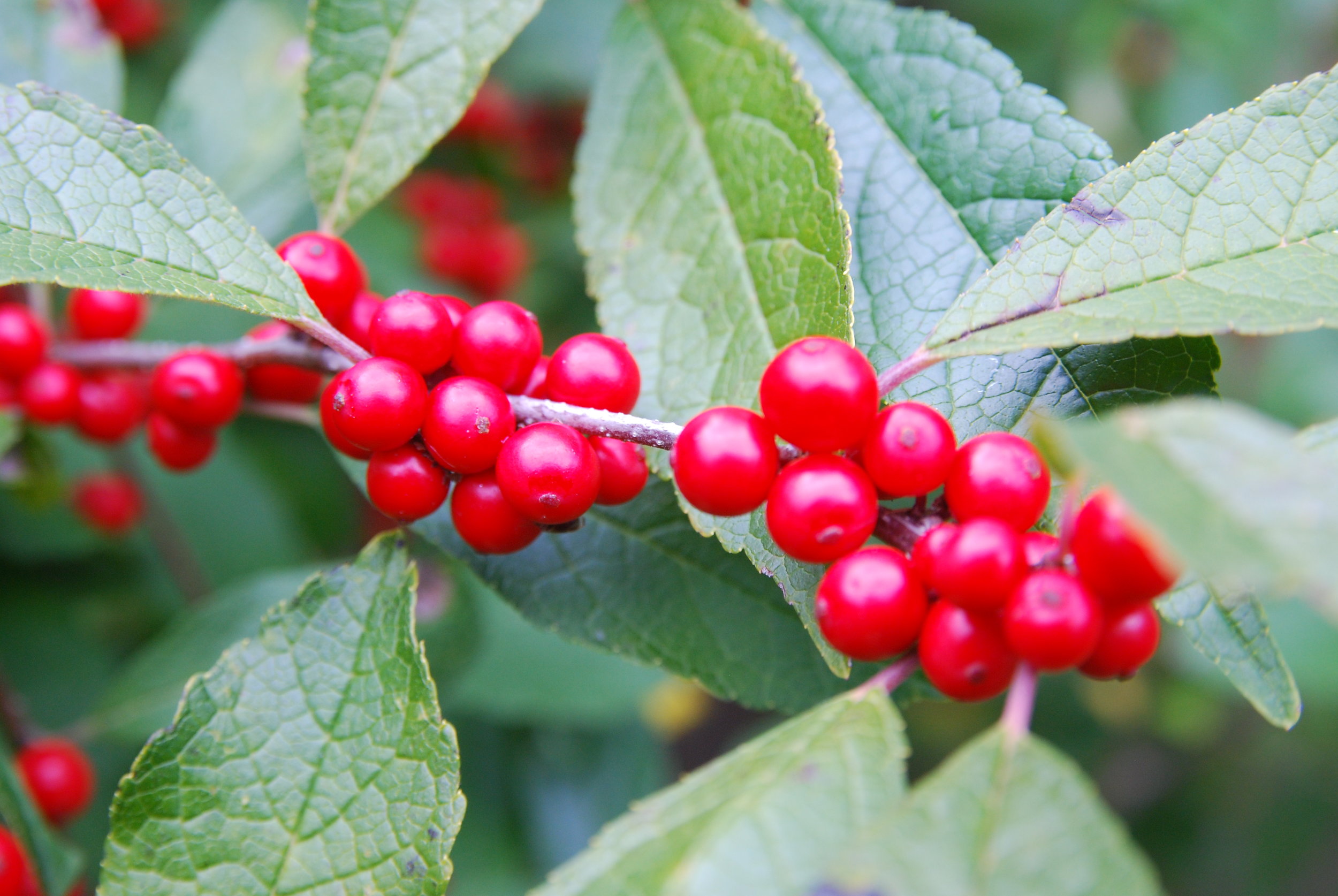With a little planning, it’s possible to have bold, beautiful red in the garden year-round. What a difference color makes during the colder months, when there’s little to catch the eye. If you’ve made a New Year’s resolution to improve outdoor spaces or want to design a winter garden, think about adding a group of winterberry shrubs. It's a U.S. native species with several cultivars to choose from, many developed at the U.S. National Arboretum in Washington, D.C. Here are two favorites that grow in my Vermont garden.
During the summer these multi-stemmed shrubs blend into the background; with mid-green foliage they add bulk to a sunny woodland border edge. I've located several plants just off our driveway against a background of evergreen cedars. It's a pop of color that says "welcome home."
Sparkleberry Winterberry
(Ilex ‘Sparkleberry’)
Origin: This is the female cultivar of the eastern U.S. native.
Where it will grow: Hardy to -20 degrees Fahrenheit (USDA zones 5 to 9; find your zone)
Water requirement: Medium to wet soil
Light requirement: Full sun to partial shade
Mature size: 5 to 9 feet tall
Benefits and tolerances: Tolerates wet soils; attracts birds
This cultivar produces bright red fruits that attract birds during winter. Plant with Ilex ‘Apollo’ (the male cultivar) for the best fruit set. Use it as a small tree if space is limited.
Winter Red Winterberry
(Ilex verticillata ‘Winter Red’)
Origin: This is the female cultivar of the eastern U.S. native.
Where it will grow: Hardy to -40 degrees Fahrenheit (zones 3 to 9)
Water requirement: Medium to wet soil
Light requirement: Full sun to partial shade
Mature size: 6 to 8 feet tall
Benefits and tolerances: Adapted to swamps and wetlands; attracts birds
This is a better selection for gardeners in cold regions — and it’s more compact. The male cultivar for this plant is I. ‘Southern Gentleman’. It makes for an eye-catching border and is very low maintenance.
For winter containers branches of winterberry holly look fantastic mixed with pine boughs, fir tips and other evergreens, and they last a long time indoors, too.
In the landscape birds will eat the red berries — watch for robins, cardinals, juncoes, grosbeaks and cedar waxwings.


